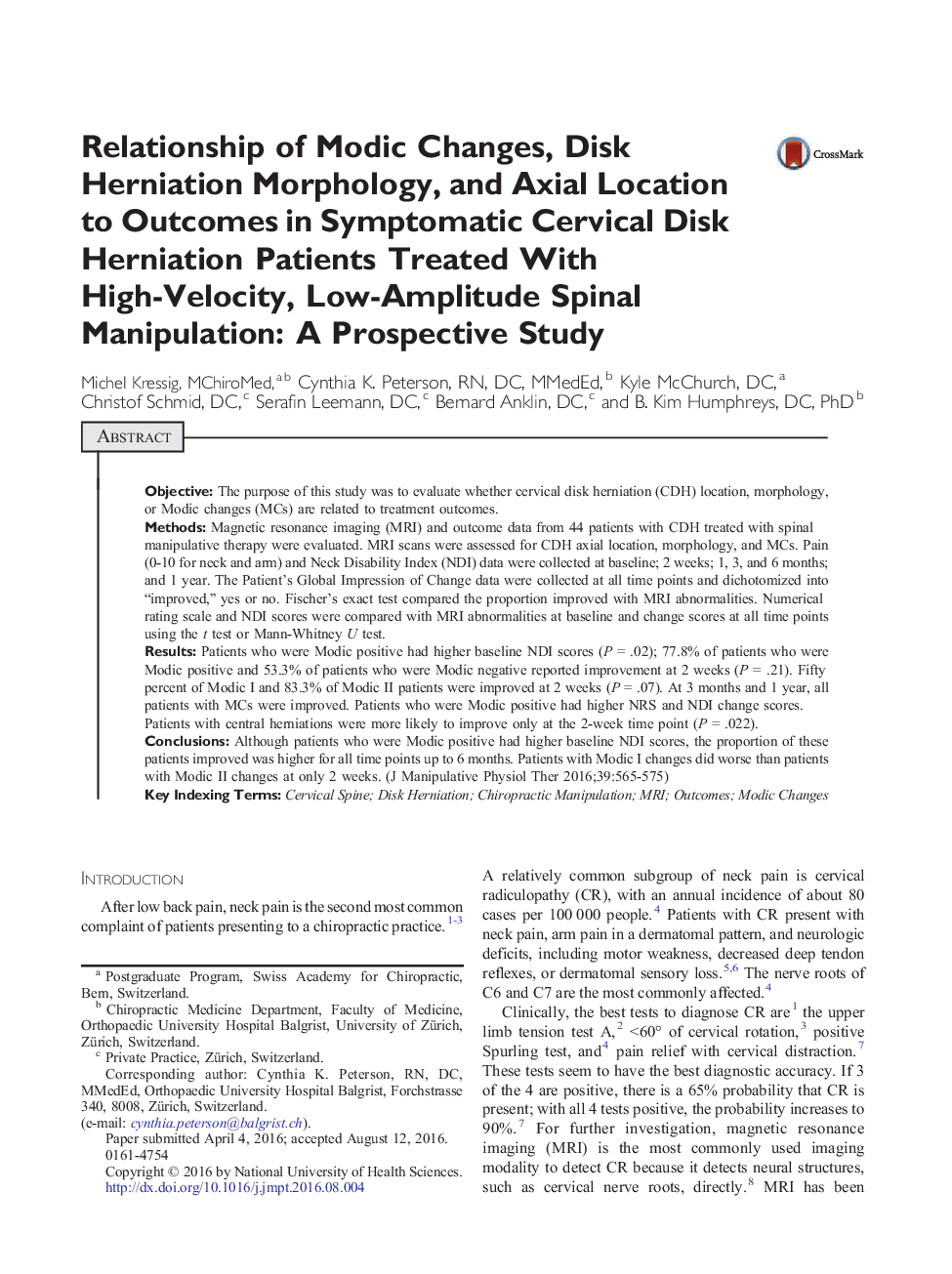| Article ID | Journal | Published Year | Pages | File Type |
|---|---|---|---|---|
| 5564219 | Journal of Manipulative and Physiological Therapeutics | 2016 | 11 Pages |
ObjectiveThe purpose of this study was to evaluate whether cervical disk herniation (CDH) location, morphology, or Modic changes (MCs) are related to treatment outcomes.MethodsMagnetic resonance imaging (MRI) and outcome data from 44 patients with CDH treated with spinal manipulative therapy were evaluated. MRI scans were assessed for CDH axial location, morphology, and MCs. Pain (0-10 for neck and arm) and Neck Disability Index (NDI) data were collected at baseline; 2 weeks; 1, 3, and 6 months; and 1 year. The Patient's Global Impression of Change data were collected at all time points and dichotomized into “improved,” yes or no. Fischer's exact test compared the proportion improved with MRI abnormalities. Numerical rating scale and NDI scores were compared with MRI abnormalities at baseline and change scores at all time points using the t test or Mann-Whitney U test.ResultsPatients who were Modic positive had higher baseline NDI scores (P = .02); 77.8% of patients who were Modic positive and 53.3% of patients who were Modic negative reported improvement at 2 weeks (P = .21). Fifty percent of Modic I and 83.3% of Modic II patients were improved at 2 weeks (P = .07). At 3 months and 1 year, all patients with MCs were improved. Patients who were Modic positive had higher NRS and NDI change scores. Patients with central herniations were more likely to improve only at the 2-week time point (P = .022).ConclusionsAlthough patients who were Modic positive had higher baseline NDI scores, the proportion of these patients improved was higher for all time points up to 6 months. Patients with Modic I changes did worse than patients with Modic II changes at only 2 weeks.
